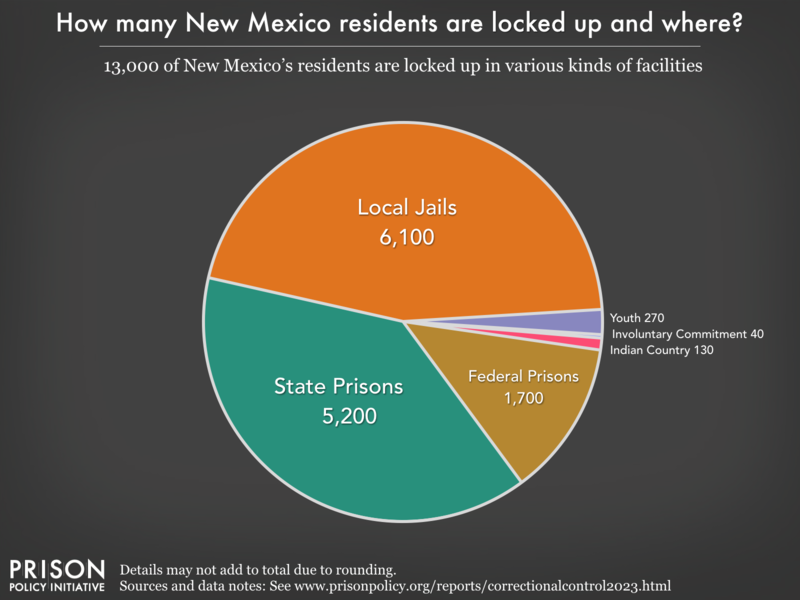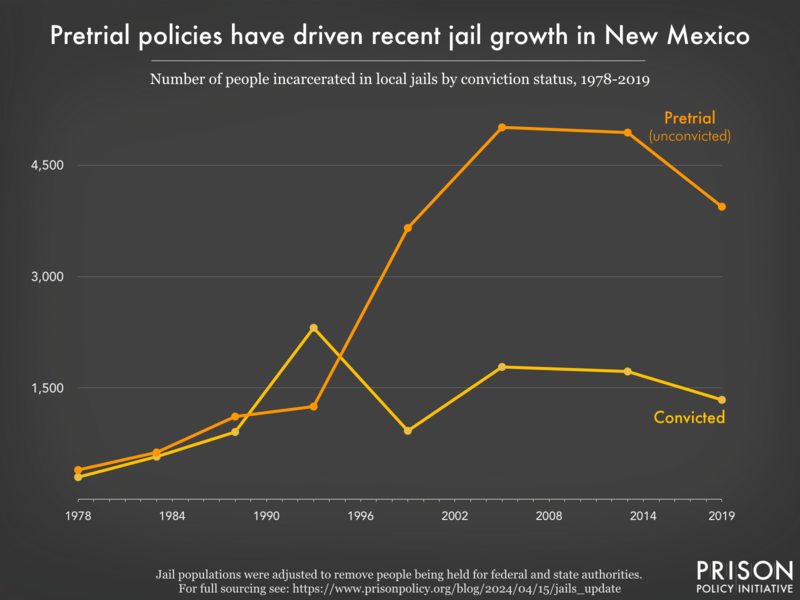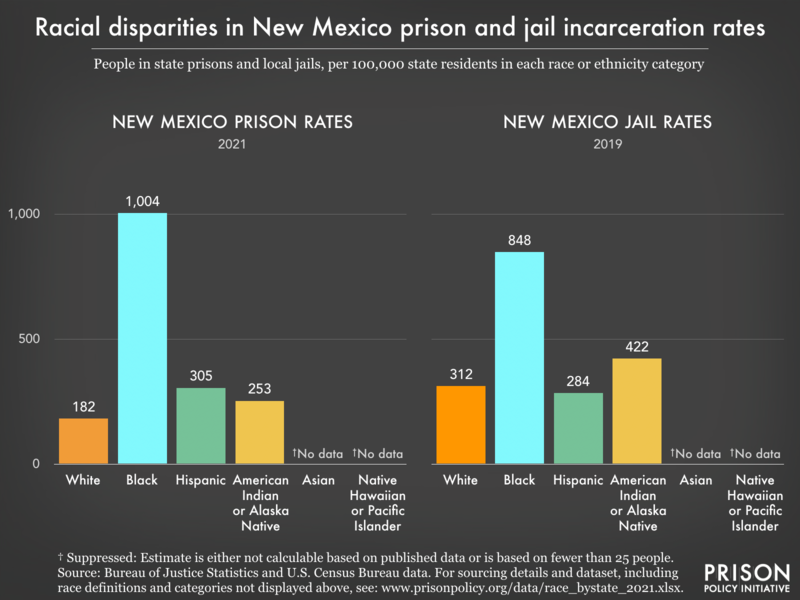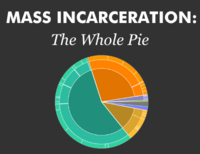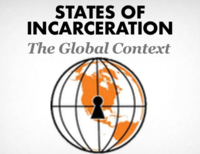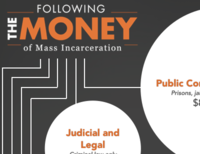Thank you,
—Peter Wagner, Executive Director
Donate
New Mexico profile
New Mexico has an incarceration rate of 647 per 100,000 people (including prisons, jails, immigration detention, and juvenile justice facilities), meaning that it locks up a higher percentage of its people than any independent democratic country on earth. Read on to learn more about who is incarcerated in New Mexico and why.
13,000 people from New Mexico are behind bars
Additionally, the number of people impacted by county and city jails in New Mexico is much larger than the graph above would suggest, because people cycle through local jails relatively quickly. Each year, at least 49,000 different people are booked into local jails in New Mexico.
Rates of imprisonment have grown dramatically in the last 40 years
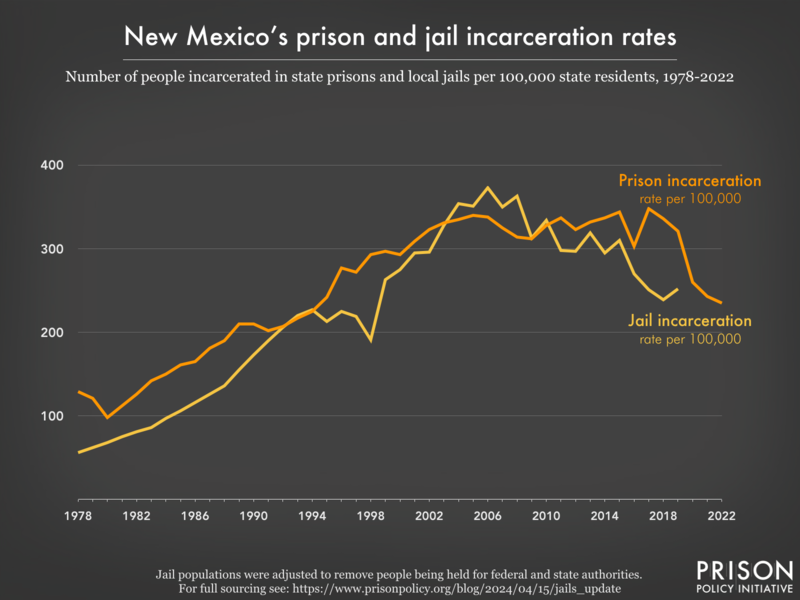
- total numbers rather than rates.
- Women’s prisons: Incarceration Rates | Total Population
- Men’s prisons: Incarceration Rates | Total Population
Today, New Mexico’s incarceration rates stand out internationally

People of color are overrepresented in prisons and jails
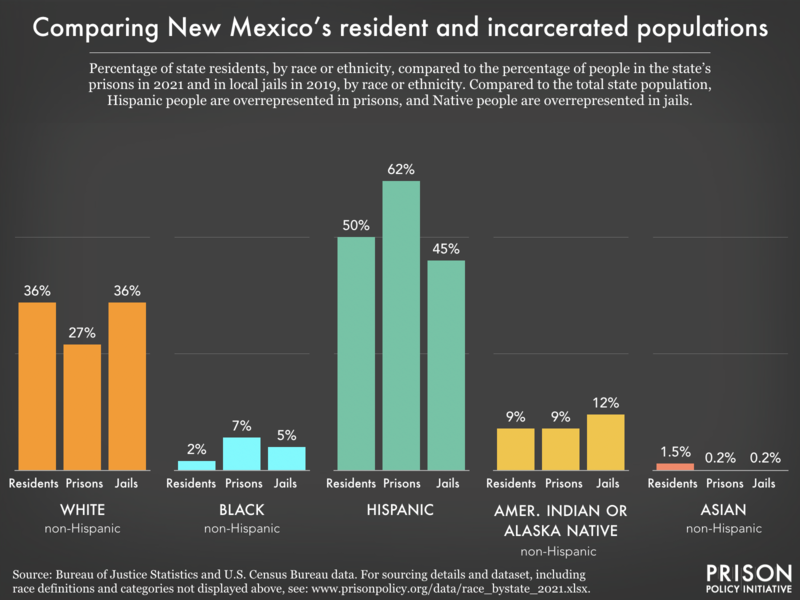
New Mexico's criminal justice system is more than just its prisons and jails
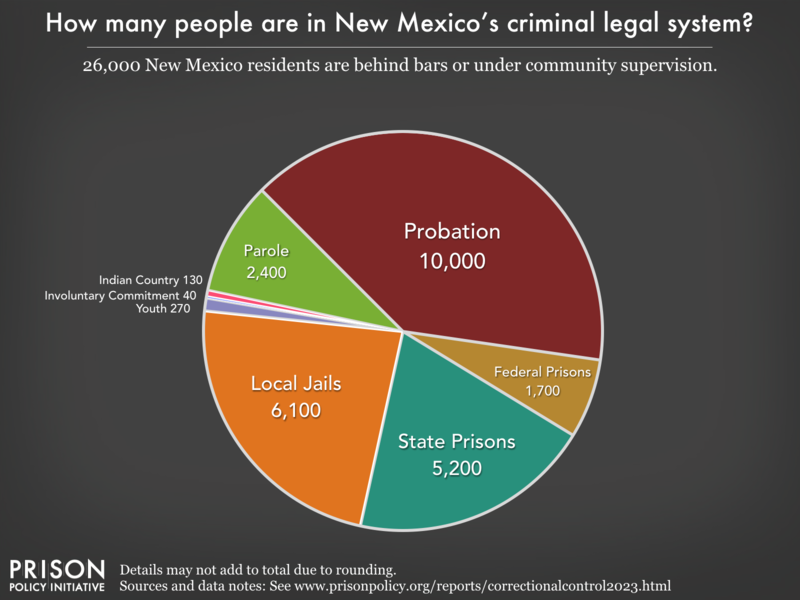
Reports and briefings about New Mexico's criminal legal system:
Filter to show
- People on probation in New Mexico are saddled with onerous rules and conditions they must follow every day or risk incarceration.
- Prisons in New Mexico have tablets, but they may be being used to restrict incarcerated people’s access to books and sap them of the little money they have.
- With an incarceration rate of 647 per 100,000 residents, New Mexico locks up a higher percentage of its people than any independent democratic country on earth.
- Prisons in New Mexico force incarcerated people and their families — some of the most vulnerable members of society — to subsidize mass incarceration.
- 75% of people in New Mexico jails have not been convicted of a crime, meaning they're legally innocent. There are simple steps the state can take to reduce this number. Why isn't it?
- New Mexico releases roughly 86,301 men and 29,961 women from its prisons and jails each year. What is it doing to support them upon reentry?
- New Mexico prisons force incarcerated people to pay "restitution" for medical charges related to self-harm or suicide
- After implementing a restrictive mail-scanning policy purportedly to address drugs behind bars, the rate of positive drug tests in New Mexico prisons nearly doubled.
- Black people in New Mexico are incarcerated at a rate 5.5 times higher than white people.
- New Mexico's choice to criminalize "failure to appear" may be hurting public safety
- The cost of incarcerating older people is incredibly high, and their risk of reincarceration is incredibly low, yet 11% of people in New Mexico prisons are over the age of 55. Why is the state keeping so many older people locked up?
- Data from New Mexico and other jurisdictions shows: Releasing people pretrial doesn't harm public safety
- New Mexico makes it difficult or even risky for incarcerated journalists to tell their stories.
- In New Mexico, 13,000 people are incarcerated and another 12,400 are on probation or parole.
- Jails in New Mexico charge up to $3.15 for a 15-minute phone call, reaping profits for companies, while prisons charge $1.20 for a 15-minute call.
- New Mexico prisons are replacing incarcerated people's personal mail with scans, stifling family contact
- New Mexico does not charge medical copays in prisons — and neither should other states.
- People in New Mexico prisons must pay out of pocket for hygiene items and other basics like socks unless they have no money at all for at least a month.
- New Mexico is one of a handful of states that does not charge families to send money to their incarcerated loved one.
- We gave New Mexico a "D-" grade in September 2021 for its response to the coronavirus in prisons.
- New Mexico hinders jury diversity by excluding people with felony records until they complete probation and parole sentences
- How many COVID-19 cases in New Mexico communities can be linked to outbreaks in correctional facilities? (data from our report Mass Incarceration, COVID-19, and Community Spread)
- We graded the parole release systems of all 50 states — New Mexico gets an F-
- New data: Low incomes — but high fees — for people on probation in New Mexico
- New Mexico incarcerates women at a rate of 194 per 100,000 residents — higher than any democratic country on earth.
- People in New Mexico prisons earn as little as 10¢ an hour for their work.
- Prison-based gerrymandering on the campaign trail in New Mexico
Other resources
- Research on New Mexico in our Research Library
